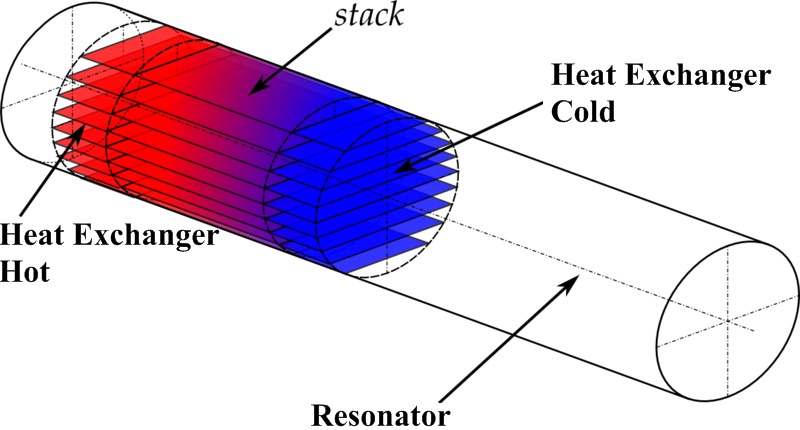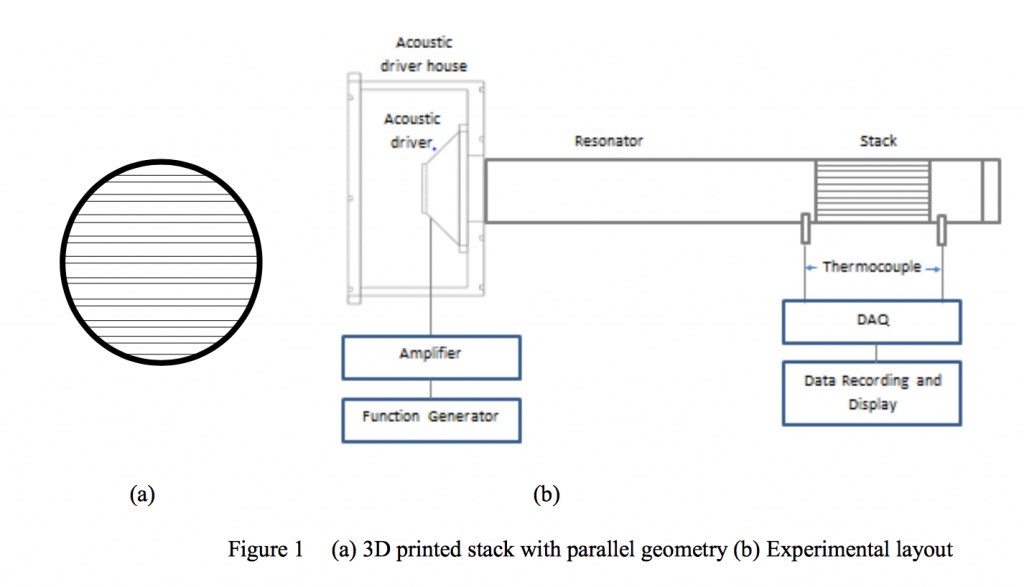Research presented at the 8th International Conference on Applied Energy shows how 3D printing can be used to optimize the production of refrigerators. The technique is used to make the heat exchanger stack found at the core of a thermoacoustic engine – that uses sound waves to generate cold.
An alternative to hazardous chemicals
In a typical refrigerator, gases such as ammonia, sulfur dioxide and propane, are used to create the cold. When released to the atmosphere these substances are hazardous and often toxic to both humans and the atmosphere.
By contrast, a thermoacoustic refrigerator (TAR) uses inert gases as the working fluid. The thermoacoustic engine of a TAR also creates and distributes heat by channelling sound waves through a specially designed stack of plates.

These plates are typically made from a specific Corning Celcor ceramic material or Mylar plastic, that are either ready made, or cut by hand to meet specifications.
Noticing the inefficiency of this method, researchers from the Universiti Teknologi Malaysia, its graduate campus the UTM Razak School of Engineering and Advance Technology, and Université de Rennes 1, have proposed 3D printing as an alternative method to making the plates.
3D printing the plates
To make the plates, researchers use a Stratasys Objet24. In this 3D printer, material is jetted onto a substrate, and cured into a solid layer. The medium used for the plates is Stratasys’ VeroWhitePlus Rgd835 rigid opaque material. In terms of heat conductivity, VeroWhitePlus is superior to the commonly used Mylar plastic, but inferior to the conductivity of Celcor ceramic.
The limits of 3D printing allows a spacing between the stack plates to be 0.5 mm, and a matching plate thickness. Ideally this degree would be narrower, increasing the coefficient of performance (COP) of the plates, but the Celcor Ceramic ready-made stack by comparison has a spacing of 1mm.
Improved performance and optimization
Once 3D printed, the VeroWhitePlus stack is placed into a experimental thermoacoustic layout and tested for its efficiency.

Maximum temperature tests in comparison to Mylar plastic and Cellar ceramic indicate that “the 3D-printed stack still shows the best performance measured by the lowest temperature achieved and temperature difference with the thickness being thicker by almost 40%”.
In conclusion, authors state,
With 3-D printing, the error from drawing board to fabrication has been minimized, inconsistencies eliminated, and the time for fabrication of the stack has been reduced. It is expected that the performance of the thermoacoustic refrigerator can be further improved if the fabrication technology can keep up with the optimization theory.
The paper Performance of a 3D-printed stack in a standing wave thermoacoustic refrigerator discussed in this article was presented at The 8th International Conference on Applied Energy, October 2016. It is co-authored by Nor Atiqah Zolpakar, Normah Mohd-Ghazali, Robiah Ahmad and Thierry Maré, and available to read online in the journal Energy Procedia vol. 105.
Other eco-friendly 3D printing projects include the use of site-specific, natural materials for construction, and projects to recycle the likes of food waste and agricultural by-products to make 3D printer feedstock.
Stay up-to-date with the latest 3D printing news by subscribing to our newsletter and following us on twitter and Facebook.
Featured image: Fridge magnets. Photo by Nick Farnhill, nickfarnhill on Flickr



